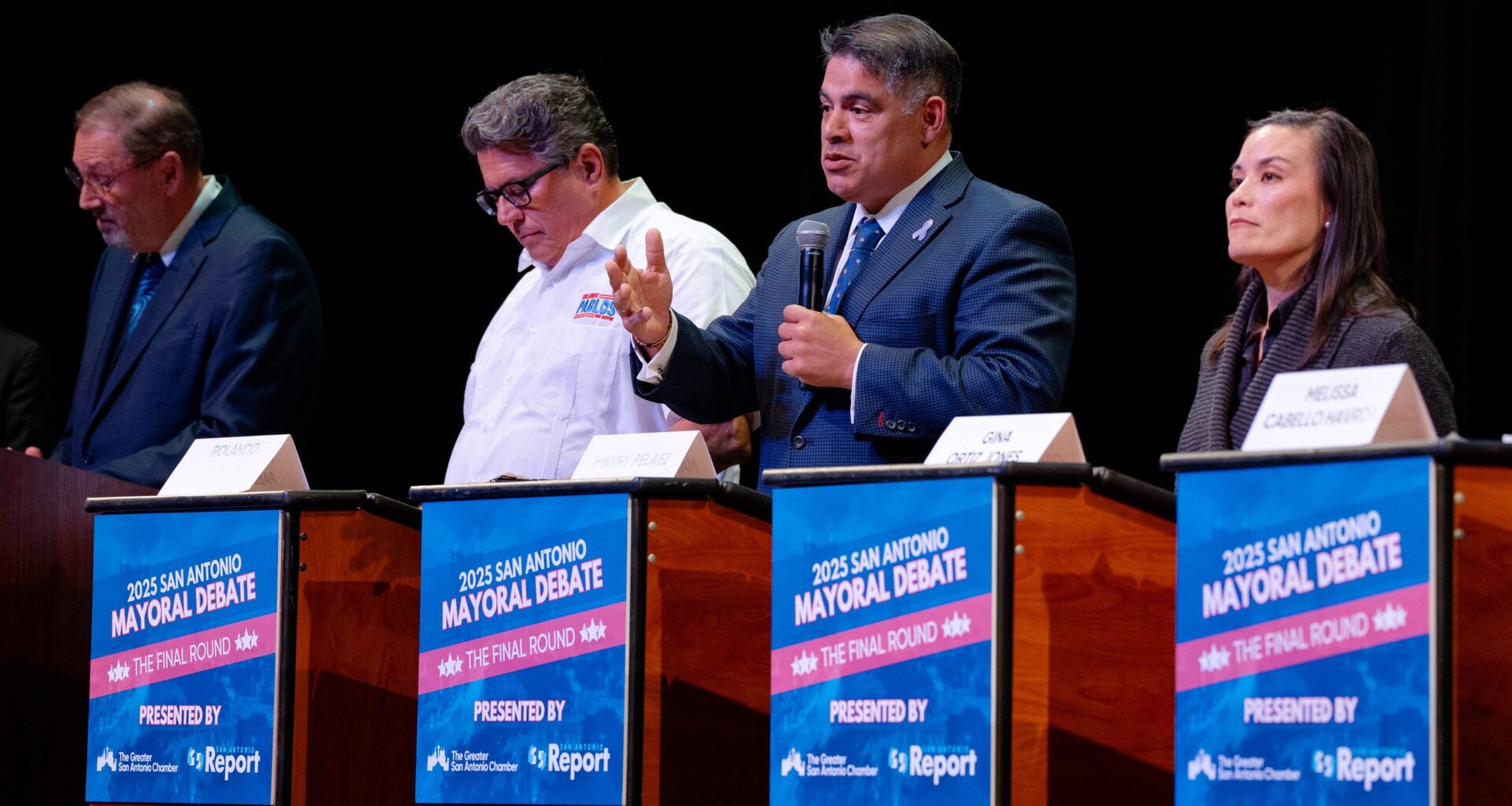A combination of partisan interests, a large number of candidates and a proliferation of PACs supporting them likely made San Antonio’s 2025 mayoral race the most expensive in the city’s history, local political consultants say.
Final campaign finance reports for candidates and outside groups were due Tuesday, though some stragglers still had not filed as of Thursday afternoon.
“[San Antonio] has never seen that kind of money,” said Kelton Morgan, a longtime San Antonio political strategist who has worked for candidates or PACs in nearly all of the city’s recent municipal elections, including for tech entrepreneur Beto Altamirano in this year’s mayoral race.
The price tag on a mayoral campaign has been steadily rising for years, with multiple candidates cracking the $1 million mark in individual fundraising for the expensive race 2015 to replace Julián Castro.
The 2019 race between Mayor Ron Nirenberg and Greg Brockhouse also broke some new ground in how local races are funded, with unusually high PAC spending from the police and fire unions.
But this year’s race to replace Nirenberg — San Antonio’s first mayoral contest without an incumbent in eight years — drew at least eight candidates with either recent political experience, self-funding capabilities or connections to Republican or Democratic party leaders that don’t typically get involved in nonpartisan municipal races.
“Campaigns overall are becoming more expensive … but it feels like this election was also just sort of a proxy for what was going on in national politics,” said San Antonio political consultant Laura Barberena, who pointed to Republicans’ wave election just six months before the mayor’s race.
From a field of 27 candidates, this year much of the attention centered around former Air Force Under Secretary Gina Ortiz Jones, a favorite of national Democrats who’ve long sought to promote her as a future leader, and former Texas Secretary of State Rolando Pablos, a close ally of two Texas Republican governors.
Pablos spent about $770,000 on the race, while another $1.5 million was spent on his behalf by a PAC aligned with Gov. Greg Abbott that hoped to build a bench for Republican talent in some traditionally blue territory. He received another $360,000 in help from the San Antonio Police Officers’ Union.
Jones’ campaign spent a total of roughly $700,000, while left-leaning PACs spent at least $590,000 on her behalf, according to a San Antonio Report analysis.
She received help from national Democrats’ Fields of Change PAC — aimed at promoting a new generation of Democratic leaders — as well as the statewide progressive group Texas Organizing Project, the Texas Democratic Party and even the Democratic National Committee.
Together, between the candidates and their supporting PACs, Jones and Pablos had at least $3.8 million spent helping them throughout the course of the election.
Barberena said it’s unclear whether that aggressive spending is the new normal, but suggested the attention this year’s race received from state and national political interests could signal the “dawn of a new era” in local elections.
“I think everyone is realizing that the way we take back our national politics is to go local,” Barberena said. “So I think a lot more groups are going to be focused on some of these local races.”
PAC mentality
In a crowded race, this year none of the candidates’ individual fundraising reached the $1 million mark strategists have come to consider the going rate for a successful mayoral campaign.
But that didn’t stop a number of them from finding creative ways to fund the expensive political efforts needed to reach voters in a low-turnout election.
Altamirano, former District 8 Councilman Manny Pelaez and former Councilman Clayton Perry all put significant personal dollars into their campaigns — money that isn’t subject to the city’s $1,000 individual contribution limit.
At the same time, Altamirano, Pelaez and Jones all received help from PACs that either did not legally have to disclose their donors, or reported large sums of money funneled through other groups.
Unlike past municipal elections, where special interests like the Koch brothers or the police and fire unions controlled most of the PAC spending, this year mayoral candidates followed the national political model of PACs formed to help a specific candidate.
Such PACs function more like an arm of the campaign, even though the two can’t legally coordinate, because they’re run by the candidate’s close allies.
“The big outside money, the super PAC thing had never been done here before, and in this case, was adopted in one form or another by at least four candidates,” Morgan said.
Candidates’ supporting PACs spent at least a combined $2.7 million on San Antonio’s 2025 mayoral race, according to a San Antonio Report analysis of the final reports.
The pro-Pelaez group, San Antonio for Everyone, had not filed a final report as of Thursday evening. A number of the candidates had also not filed their semi-annual reports as required by Texas law.
